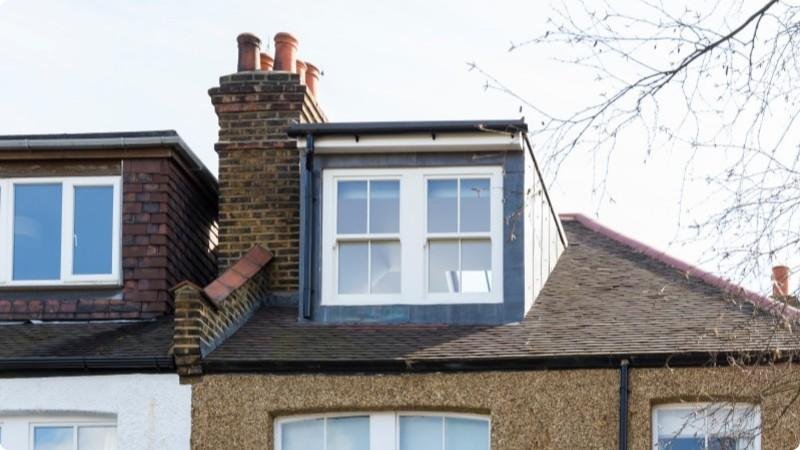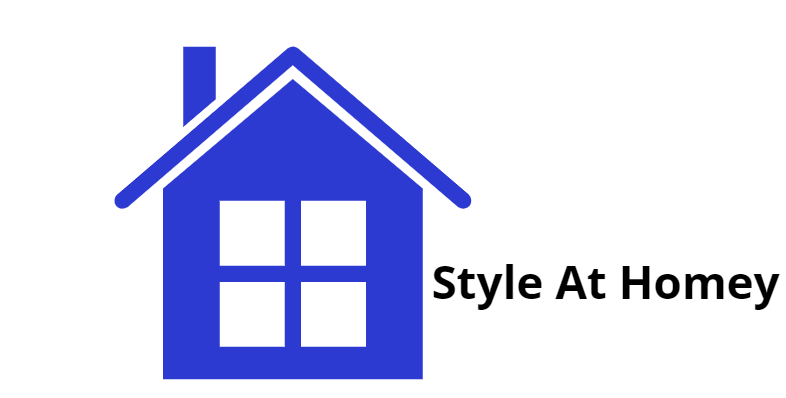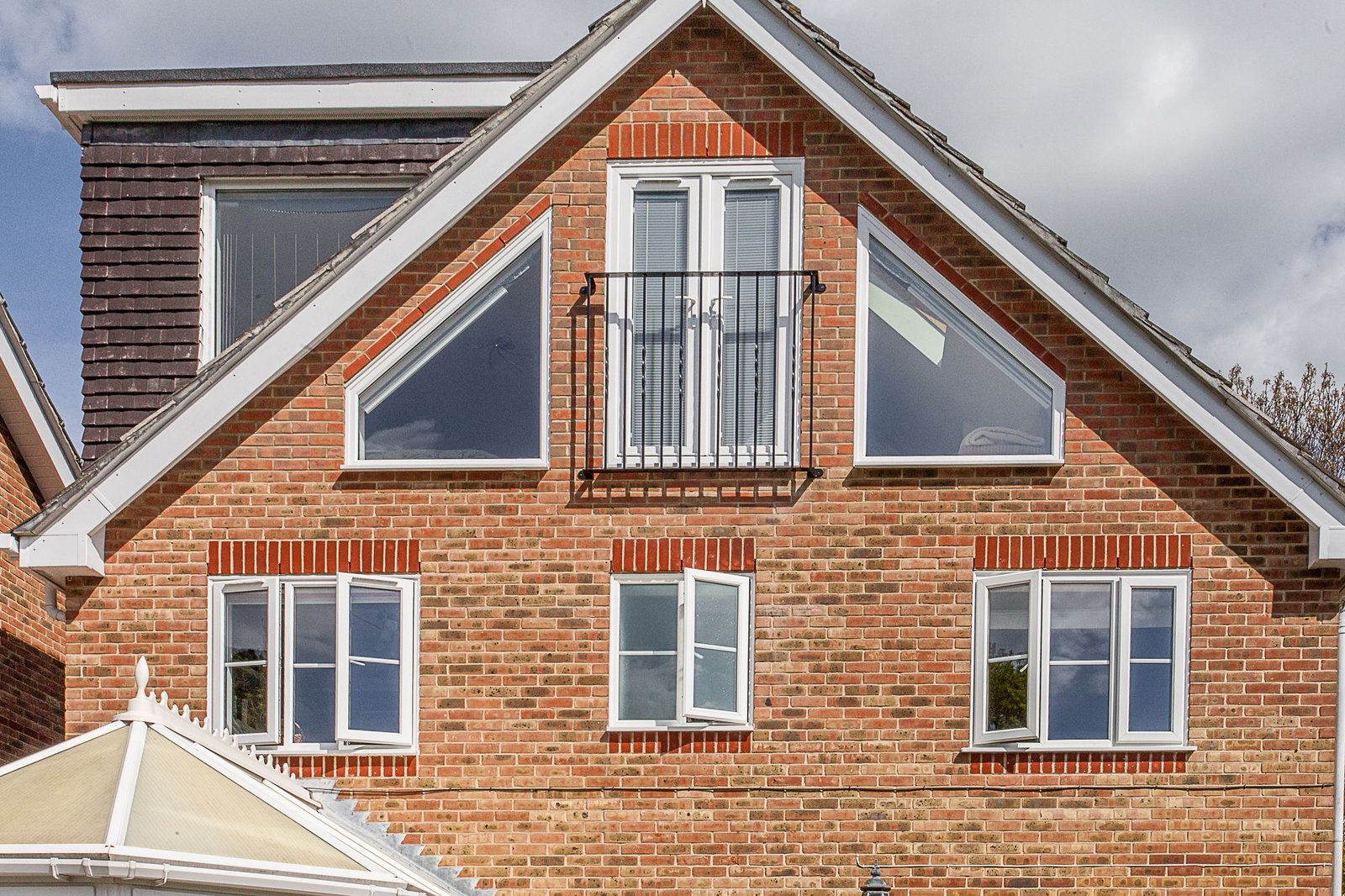A dormer roof is a distinct architectural feature characterized by a vertical structure that protrudes from the slope of a primary roof. It is commonly designed with its own roof, creating additional vertical space and light within an upper level, often transforming traditionally unused attic areas into functional living spaces. The primary purpose of a dormer is to enhance the usability and aesthetics of a structure, while also providing natural light and improved ventilation.
Dormer roofs come in various styles, each offering unique benefits and design elements. For instance, the gable dormer is characterized by its triangular shape, which adds a classic touch to homes. Alternatively, the shed dormer features a single-pitched roof, creating a modern look while maximizing headroom and floor space. Other types, such as hip dormers and eyebrow dormers, contribute to the overall character of a home, reflecting the diverse needs and styles of homeowners.
Historically, dormers have played an essential role in architectural design. Originating in the late medieval period, they were primarily utilized in Europe to provide light and accessibility in upper stories. Over the centuries, dormer roofs evolved with architectural trends, becoming a defining feature of various styles, such as Victorian, Colonial, and Craftsman designs. In contemporary constructions, the dormer has gained renewed popularity due to its practical advantages and stylistic versatility, enabling homeowners to maximize space and enhance curb appeal. As such, dormers continue to be a significant element in modern housing, merging functionality with aesthetic value.
Advantages of Installing a Dormer Roof
A dormer roof provides a multitude of advantages that greatly enhance both the functionality and appeal of a home. One prominent benefit is the influx of natural light it offers. By introducing vertical windows along the dormer structure, homeowners can flood previously dim attic spaces with sunlight, creating a more inviting and uplifting atmosphere. This natural illumination not only improves the mood and comfort levels within a dwelling but also reduces reliance on artificial lighting during the day, contributing to energy efficiency.
In addition to improving brightness, dormer roofs significantly increase living space. This structure allows for the transformation of attic areas into practical rooms, such as bedrooms, playrooms, or home offices. Families facing space constraints often find that a dormer roof can alleviate overcrowding by providing much-needed additional square footage without the need for a full-scale home extension. Consider a family that decides to add a dormer; they can elevate their property’s functionality and overall living experience.
From an aesthetic standpoint, dormer roofs can enhance a home’s exterior appeal. They break the monotony of traditional rooflines and create visual interest, which can be particularly valuable in neighborhoods where homes may appear too uniform. In some cases, an architecturally design-driven dormer can become a focal point of the property, enhancing curb appeal and potentially increasing its market value. Furthermore, enhanced ventilation is another practical advantage; dormers can facilitate better airflow, which is essential for maintaining indoor air quality, particularly in upper levels of the home.
Overall, the advantages of installing a dormer roof extend beyond mere aesthetics. The combination of added light, usable space, and improved airflow supports a more comfortable and elevated residential experience. It also opens up possibilities for various design enhancements while potentially increasing the property’s value—making a dormer roof an appealing choice for homeowners.
Different Styles of Dormer Roofs
Dormer roofs come in a variety of architectural styles, each offering distinct design characteristics and benefits. Among the most common types are gable, shed, hip, and eyebrow dormers, each serving unique functions and aesthetics in residential construction.
The gable dormer is perhaps the most recognized style, featuring a triangular roof that slopes down to meet the main structure. This design allows for ample headroom and natural light, making it a popular choice for enhancing upper-floor living spaces. Gable dormers are versatile, complementing a wide range of home styles from traditional to contemporary, and they effectively shed water, which is beneficial in areas prone to heavy rainfall.

Shed dormers, with their single sloped roof, provide a modern look that seamlessly integrates with the main roofline. This style is particularly advantageous for maximizing attic space, making it suitable for homes with limited elevation. They are an excellent option for flatter roofs and can be easily adapted to homes that lean toward minimalist designs.
The hip dormer exhibits a more complex roof structure, characterized by slopes on all four sides. This design not only adds depth and character to a home but also enhances stability against high winds, making it a favorable choice in storm-prone regions. The aesthetic appeal of hip dormers contributes significantly to the overall charm of Tudor or colonial-style houses.
Eyebrow dormers add a distinctive flair with their low-profile design, boasting rounded tops. Typically found in coastal and cottage-style homes, these dormers are excellent for providing light without overwhelming the roof’s profile. The subtle curves can lend a graceful touch to the overall architecture, ensuring the residence harmonizes with its environment.
Choosing the right style of dormer roof can profoundly influence a home’s aesthetic appeal, functionality, and suitability for its environmental context. Understanding these differences can guide homeowners in selecting the best dormer design that aligns with their architectural vision and practical needs.
Considerations for Adding a Dormer Roof to Your Home
When planning to add a dormer roof to your home, several important factors must be considered to ensure a successful project. First and foremost, understanding zoning regulations in your area is essential. Local building codes may dictate the size, style, and placement of a dormer, as well as any necessary permits. Failing to comply with these regulations can result in costly fines or the requirement to reverse the work.
Another significant consideration is the structural integrity of your home. A dormer roof greatly alters the roofline and may require reinforcing the existing structure to support the additional weight. Consulting with a structural engineer or an experienced contractor can help assess the viability of your current framework and determine the best approach for integrating a dormer into your existing design.
Budget considerations also play a crucial role in the planning process. The cost of materials, labor, and any unforeseen expenses must be carefully evaluated. Higher-end materials can enhance the aesthetics and durability of a dormer, while budget-friendly options can still provide function and style. It is advisable to obtain multiple quotes from contractors to ensure that you are receiving the best value for your investment.
Selection of the right materials is paramount, as these will impact the overall appearance and functionality of the dormer roof. Choose materials that complement your home’s existing architecture while also providing sufficient weather resistance and insulation. When working with contractors, ensure you communicate your vision while remaining open to their professional insights regarding design and materials.
Lastly, consider the potential impact on your home insurance. Adding a dormer could alter your property value and insurance premiums, so consulting your insurance provider can help clarify these changes. Ultimately, carefully assessing your specific needs and seeking professional guidance will aid you in making an informed decision about incorporating a dormer roof into your home.

